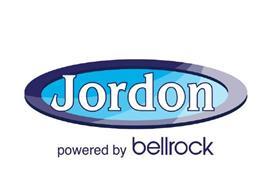When the Mark Carsley Group bought a run-down former Mobil site at Wyboston in Bedfordshire just over three years ago, the intention was to demolish it and re-build a state-of-the-art service station that would grab the attention of passing motorists.
Mark Carsley explains: "We wanted to make it stand out and do something special. Instead of being a service station on the A1, we wanted it to be the service station on the A1 with the canopy."
He already had a designer in mind. "I had met Robert Onion (chairman of brand and design consultancy Circle) at a few of the PRA and dealer meetings and knew he had done some intriguing designs in the Middle East. Some of these would be totally out of place in the UK, but he struck me as a guy who would know how to design a petrol station that would have an impact.
"We talked it through and they came up with three concepts. Then we had a look at these and came up with an amalgam of all three that we were really pleased about."
The most prominent feature of the design was its spectacular W-shaped canopy which would be clearly seen from the road. Once they had the design the next step was to involve Global-MSI, a specialist in the design, manufacture and construction of petrol station forecourt superstructures. Carsley says: "There’s no point in designing something that can’t be built or is going to be staggeringly expensive so it was important that they were on board as well."
The shape of the canopy is eye-catching, but it is when it is illuminated at night that it really stands out. He explains: "Because of the shape, downlights would make no sense because they would shine all over the place, so our lights are fixed to the stanchion poles shining up green for the oil company, and white down for the customers, and that was something we worked on quite a lot with MHA Lighting. The LED lighting is very effective and gives stunning illumination while saving an enormous amount of energy."
Mark says the local authority planners immediately understood what they were trying to achieve and there were no problems obtaining consent. The site closed in August 2013 and reopened in February 2014. "When it opened, straightaway the reaction was extremely positive," he says. "We exceeded our pre-development volume within the first month so we were absolutely delighted. The volume is up about 30% from what it was." Further success followed when it won the design category in September’s Forecourt Trader of the Year Awards.
He comments: "You spend over £1m building a petrol station and the extra cost of the canopy was something of the order of £20,000, so it made a lot of sense. We are now planning another development that will have an eye-catching canopy, assuming the planners it’s a different planning authority will allow it. The impact of the canopy was such that it’s something we would like to replicate in future developments."
However, he cautions that it’s not an approach that will suit every site. "In a local site that everybody knows you don’t need to shout so loudly that you are there. It’s the transient routes, where there’s a lot of competition and you have to make more of an effort to offer something different."
Change is needed
In addition to his design at Wyboston, Onion has worked with a range of forecourt operators and oil companies, both in the UK and overseas, with a specialism in the Middle East.
He says: "On forecourts generally since the 1960 nothing has really changed. You have the flat table type canopy that is generic throughout the industry and the only thing that differentiates it is the brand on the edge of it. My view is the world has moved on. Think of every other shopping experience a coffee shop or a supermarket and they have all thought a bit harder about what environment to present their wares from but, with one or two exceptions, petrol retailers haven’t really moved on."
He acknowledges there is pressure on operators to cut costs but believes there is value in investing in eye-catching structures and designs that create an environment in which customers feel different about the operator.
Referring to the Wyboston design, he says: "From a distance traditional flat canopies disappear because as you get away from them, they just become a thin line. The idea was to create something that really captured the eye, especially when it was illuminated. It becomes a landmark and something different from the norm. I’m not suggesting that this solution is right for every site, but for that site on an A-road, you can see it from a long way and it becomes a reason to stop."
In urban areas he believes forecourt operators have an opportunity to capitalise on the consumer trend towards more top-up shopping. He says: "There’s an opportunity to re-think the entire format and what a forecourt should be like. You drive in, you go to a pump island and you go to the shop. If you look at where retailers are making a lot of their margins it’s in the shop, so one of the ideas we have been looking at is moving the shop to the front of the site and the forecourt becomes a rearcourt and is secondary to the shop. That could work well in an urban area with a lot of pedestrians going for their top-up shop. The other thing you can do with that is create impact in the store, making it a local meeting point, so you communicate with your customers as a retailer rather than an oil company selling food."
The Winning Post Service Station at Haldon Hill on the A38 near Exeter, a redevelopment that opened in May last year, presented some stiff competition for Wyboston in the Forecourt Trader of the Year Awards.
Like the Mark Carsley Group, Chartman wanted to build a flagship site, but local planners were much less receptive and it turned into a seven-year marathon after the site was bought from BP in 2007.
Chartman director Clive Sheppard says: "The project’s aim was to use the best design and materials available to create a destination stop, (as opposed to a distress stop) for the travelling public. To do justice to the iconic Haldon Hill location, a bold, yet sensitive approach was demanded. The intention was to challenge the conventional standards of forecourt design and to produce a development that helps to change the image of the industry in the eyes of the public, and to act as a standard bearer and legacy for the Chartman Group."
The right designer
Finding a designer was not a problem because Chartman has had a relationship with local practice Allan D Matthews Architects since Allan designed its first forecourt at Ottery St Mary in 1990.
Sheppard says: "The practice has extensive experience and up-to-date knowledge of designing forecourts having worked with BP and Shell, and part of the brief we gave David Herniman, who worked on the design, was to incorporate the best aspects of both of these companies’ sites."
The commercial results speak for themselves with a third more customers year on year, and a 50% rise in shop sales, and Sheppard says feedback from customers, suppliers, staff and the retail fuel industry has been universally positive.
David Herniman says working with dealers is often quite different to working with oil companies. "With the oil companies we don’t get so involved in the design issues. We are given a very tight brief and told what to do. They have their standard buildings and their standard components, so if you go anywhere around the world you will recognise one of their sites.
"With dealer sites they can put more of their own touch into it, which was the brief from Chartman. They can give you a clean sheet of paper and say ’tell us what we can get on there’." He says others have a clear idea of what they want on a site, although sometimes the architect has to advise the client that something is not feasible and suggest alternatives.
After nearly 30 years designing forecourts the biggest change he has observed has been the increase in the importance of the forecourt shop. He says: "The building used to be secondary. It was simply somewhere for people to go in and pay for their petrol and pick up the odd can of oil, but now the shop is much more important and much bigger.
"That has made it more difficult for us because clients are wanting to put buildings on a site that are four or five times the size of the ones they are replacing but they still want to get the same number of fuel pumps."
TURNING PLANS INto REALITY
As the oil companies divest more sites, it is becoming more and more common for dealers to buy a tired old site with a view to a knockdown re-build, but how should they go about doing it?
"The first thing to do is get plans drawn up by an architect and get the planning process under way. There are a number of specialist architectural firms that deal just with petrol stations and they will be able to do that and provide an outline costing," advises Martin Steggles, managing director of MSI-Global, a specialist in the design, manufacture and construction of petrol station forecourt superstructures.
If dealers need to find an architect with suitable experience, he says, their oil companies will often be able to recommend someone or, he adds: "We could point them in the right direction because we work with all the architects."
Once agreement has been obtained from the local authority, the architects will draw up tender drawings and send them out to the main contractors who will build the scheme, and also to specialists involved such as Global-MSI.
When it comes to constructing the all-important shop, Steggles says: "What we provide is a steel frame with cladding panels on it that provide the outer walls so it’s an insulated envelope around a steel structure.
"The beauty of that is speed because within a week we can have a small forecourt shop and within two weeks a large forecourt shop weathertight from a finished concrete slab. That process isn’t affected by the weather, so while you might not be able to lay bricks if the temperature is too low it doesn’t stop the steelwork and the cladding panels being installed. And, of course, speed means the process is cheaper, and the site is closed for a shorter time."
He adds: "There’s no such thing as a standard project. There are standard details, but every structure is different. We have structural engineers and architectural draughtsmen, designers and engineers so we have everything we need."























No comments yet